Turquoise Jewelry: A Timeless Treasure
Turquoise is one of those gemstones that everyone loves and recognizes. Although its most famous variety is robin’s egg blue, the one the color is named after, it comes in several different shades and patterns. Keep reading to find out where those patterns come from and learn how to style Turquoise for yourself!
How Turquoise is Formed
First it’s important to understand that Turquoise is a hydrated phosphate. This means that it was formed when mineral-rich water seeped into the cracks of existing rocks. The minerals in the water included copper, aluminum, and sometimes iron, which chemically reacted with the “host rock” to form Turquoise in a slow but beautiful process.
The host rock is crucial, because it influences the pattern of the Turquoise. Have you ever noticed that some Turquoise gemstones are solid blue, while others have veins running through them? The veins are actually called matrices and are remnants of the host rock weaving through the Turquoise. It’s interesting that Turquoise starts off as a “guest” to the host rock in a mine. But once carved into a gemstone, the host rock appears to be the guest.
Different Matrices
The type and color of the matrix depends on the host rock. For example, a yellow matrix usually comes from a volcanic rock called rhyolite. Black matrix usually comes from iron pyrite. It’s also quite common to see a copper matrix, since copper is involved in the formation of Turquoise itself.
Turquoise gemstones have been around since at least 3000 BCE, and different cultures have favored different types of Turquoise. For example, in ancient Persia, people favored the solid blue Turquoise and viewed any type of matrix as an imperfection. In Aztec, Navajo, and Mayan culture, the matrix has always been highly favored as it is said to represent the connection between earth and water.
How to Wear Different Types of Turquoise
As gemstone enthusiasts, we at Amáli offer Turquoise both with and without matrix. We find that the pure robin’s egg blue Turquoise works really well in bracelets and earrings where several gemstones are displayed.
For example, this textile bracelet features several small gemstones that really stand out against the 18k gold chain. The tiny hint of matrices makes this piece unique and one-of-a-kind.
Wear it for a bold yet polished look. It would look amazing with a crisp white blouse and a pair of bold colored (ahem, Turquoise) pants! For an even more eye-catching look, stack this bracelet with solid colored gold bracelets.
If you prefer the spider-web patterns of Turquoise in matrix, check out this gorgeous statement ring. We’re all for mixing and matching, so you could pair this ring with the textile bracelet for a really unique look.
If you prefer the design traditionally favored by the Aztec, Navajo, and Mayan cultures check out these draped earrings. Both pairs feature our signature 18k gold chain, gorgeous colored diamonds, and of course, Turquoise. The pair on top is perfect for someone who is a water sign or simply loves to be by the water. The bottom pair is an excellent fit for an earth sign or for someone who believes in the importance of staying grounded. They should both be worn with confidence, as you’re sure to turn heads with these unique earrings.
Taking Care of Your Turquoise Jewelry
With Turquoise becoming more and more rare, it’s important to treasure the pieces you have. Turquoise is only a 5 or 6 (out of 10) on the Mohs hardness scale, so it won’t resist scratching very well. Be sure to keep it apart from other pieces to lessen the risk of scratches.
Turquoise is also very porous, which is why jewelers almost always stabilize it. The stabilization process involves injecting a colorless resin into the pores of the Turquoise. The resin is dried with heat and typically takes 30-90 days to complete. Without stabilization, Turquoise will break pretty easily.
Even though most Turquoise is filled already, you still want to avoid anything that might leak into the pores. Remove Turquoise rings when washing your hands or doing dishes. Try to keep perfumes and other chemicals off of your Turquoise, as they can seep in and cause discoloration over time. If you do get your Turquoise wet, don’t panic! In fact, it’s totally okay to clean Turquoise with water. Just dry it off as soon as possible. Avoid ultrasonic and chemical cleaning agents, as they can cause discoloration. High heat can also damage Turquoise, so be careful not to leave it in your car on a hot day.
Treat your Turquoise the way you would a valuable piece of art, and it will last a lifetime. It can be a lovely heirloom and is only expected to become more rare and valuable as time goes on.
The Future of Turquoise
Turquoise has been found for thousands of years in most arid climates of the world. China is its largest producer, but you can also find it in Iran, Tibet, Mexico, and a few other countries. It is one of the few gemstones that has been consistently popular across the globe and is more of a staple than a trend.
Unfortunately, many Turquoise mines have closed down over the last 20 years. This is partially due to the cost of mining and increased government regulations. But it’s also due to the sheer popularity of Turquoise and the majority of it having already been mined. Some mines have closed down when the owners reached old age and didn’t have anyone to take over. Others have been used for their copper production. Remember, where there is Turquoise, there is usually copper nearby.
Before You Go…
Just a few fun facts about Turquoise, and we promise, no more science!
- Turquoise is the only gemstone to have an official color named after it.
- It is one of the four recognized birthstones for December. Those December babies have all the options!
- Turquoise is known as a healing stone. In Himalayan culture, it’s called “the sky stone” and is thought to provide guidance. In Western cultures, it symbolizes water and is thought to bring peace and tranquility to the wearer.
- The oldest evidence of Turquoise stabilization dates back to the ancient Egyptians, who used beeswax to fill the pores.
- Although many Turquoise mines have closed down, there are still a handful that you can visit, including one in Royston, Nevada — the Otteson Family Mines. You can learn all about the mine’s history and even dig for your own Turquoise! How’s that for a unique vacation?
We hope this has been an interesting read, and maybe you learned something new about Turquoise. If you loved the gold and Turquoise pieces featured in this article, go check out our 18k gold blog next!
Recommended Articles
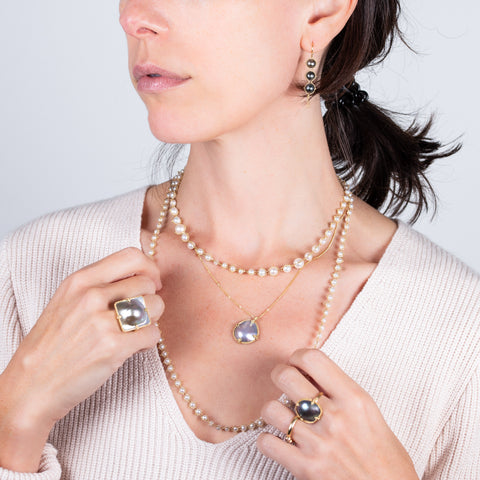

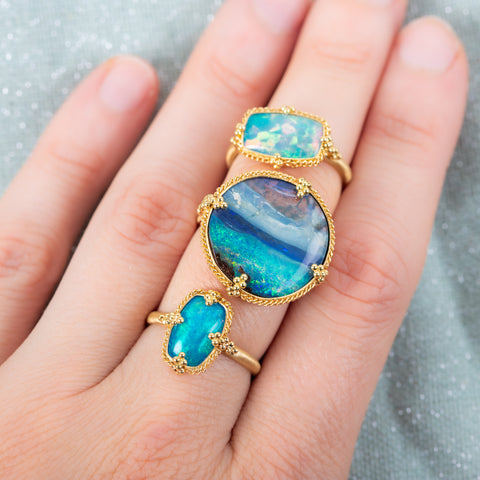
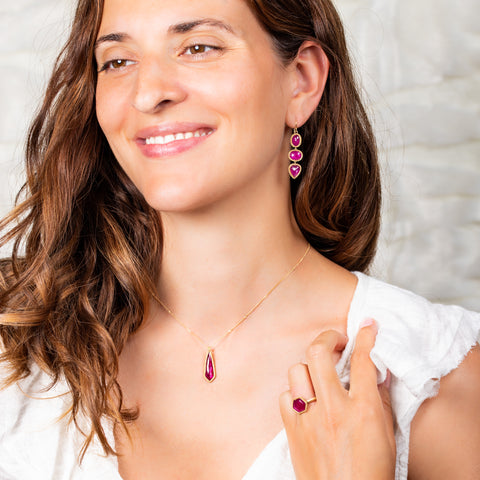





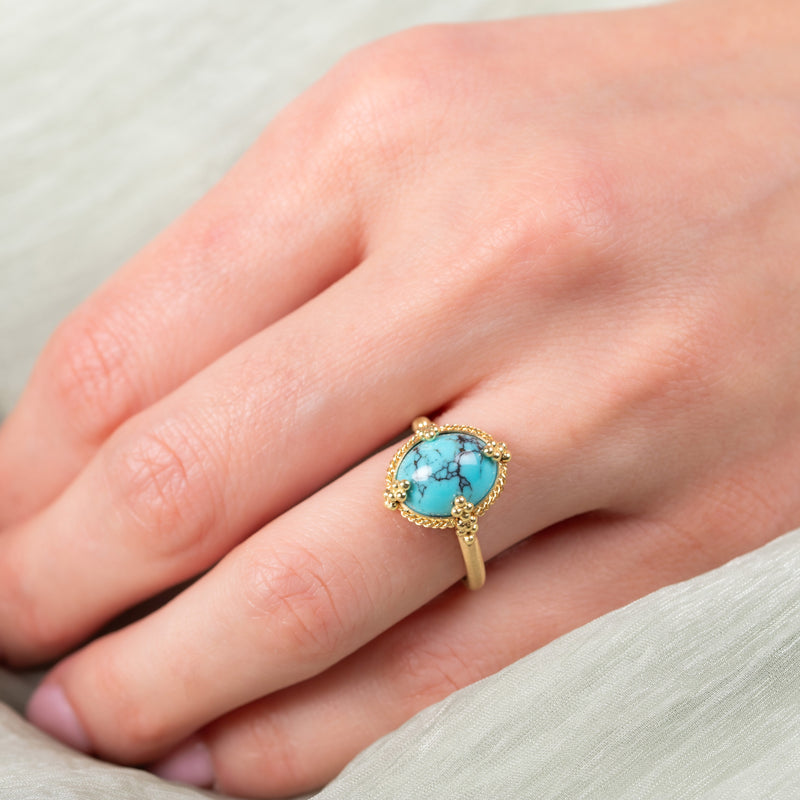

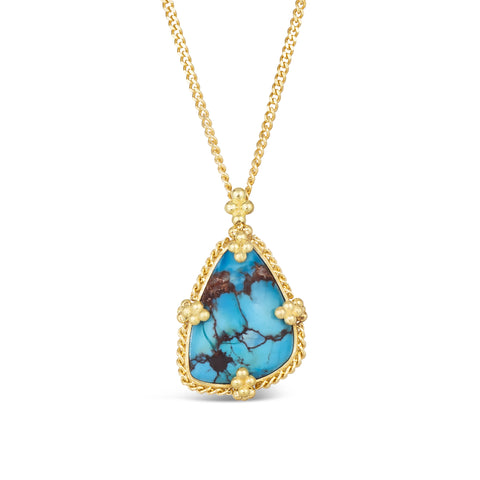

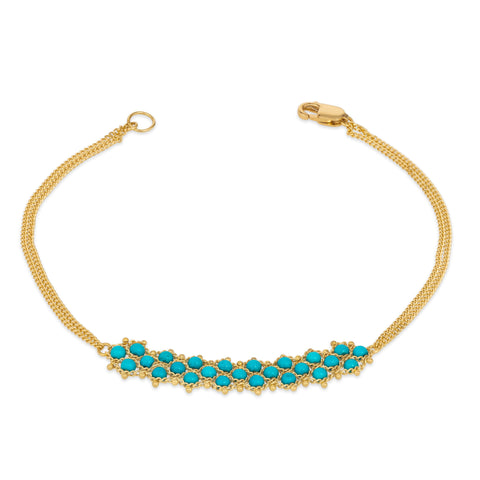
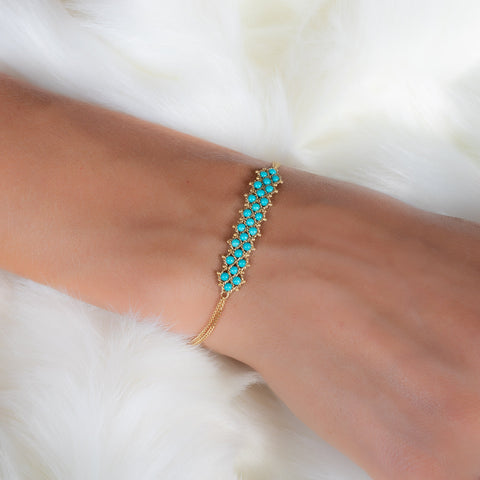
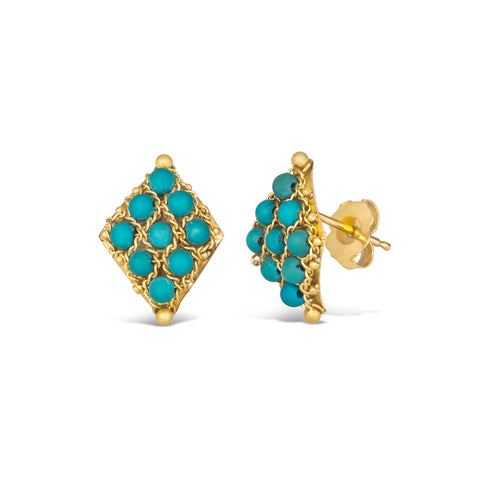
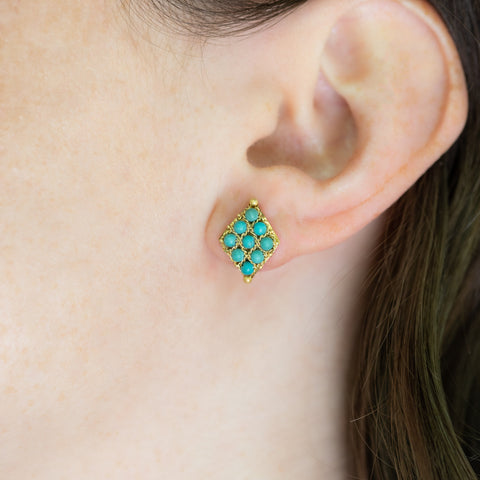
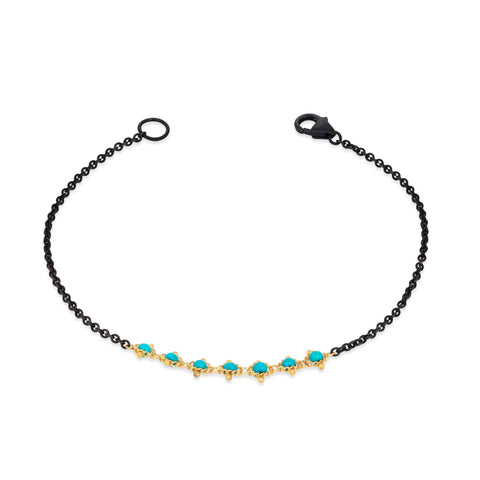
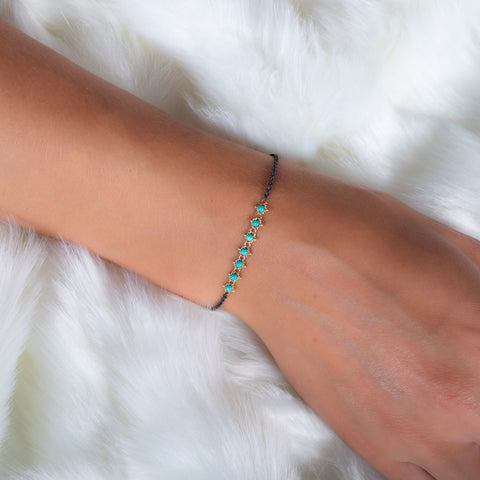
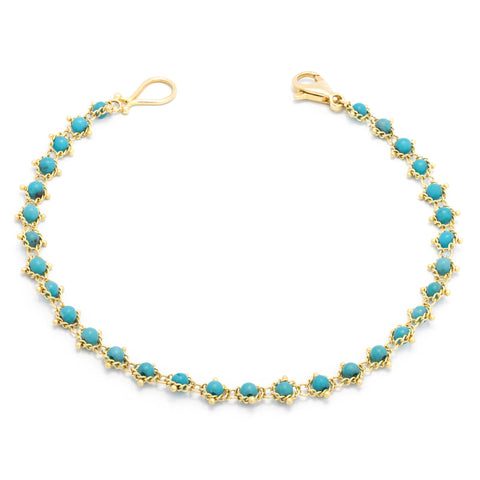
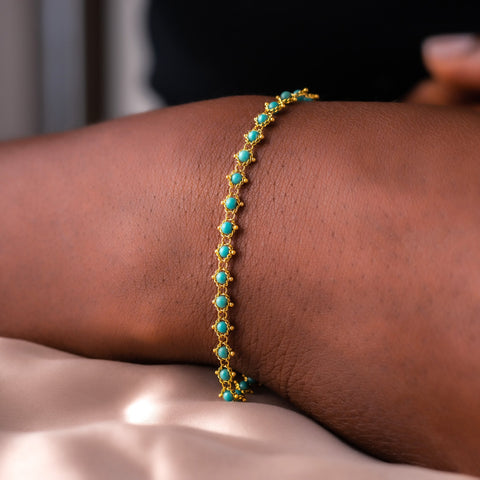


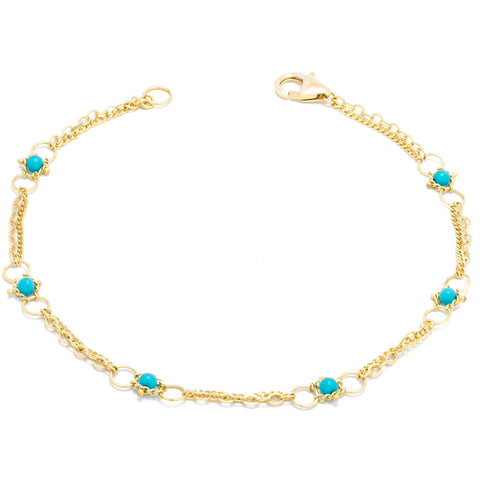


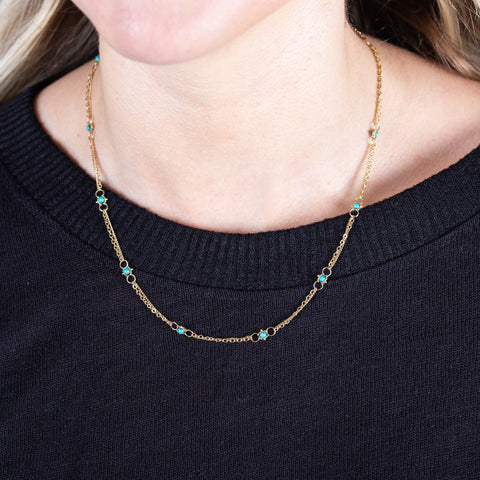
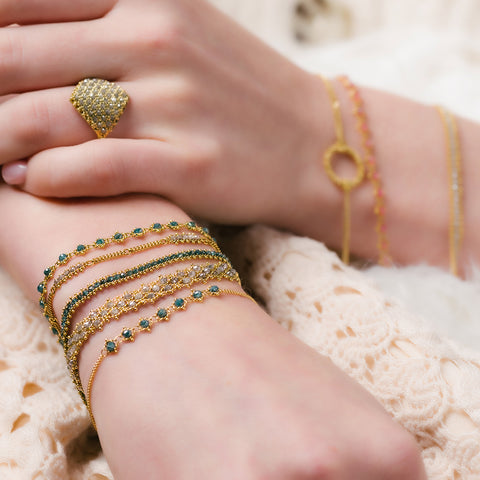
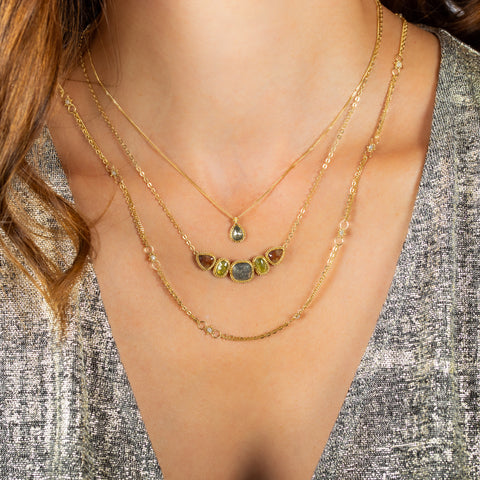
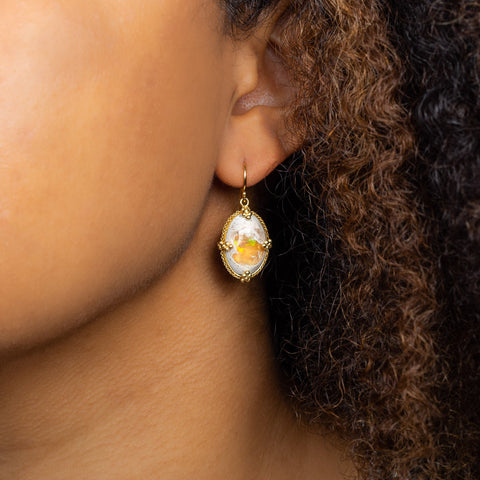

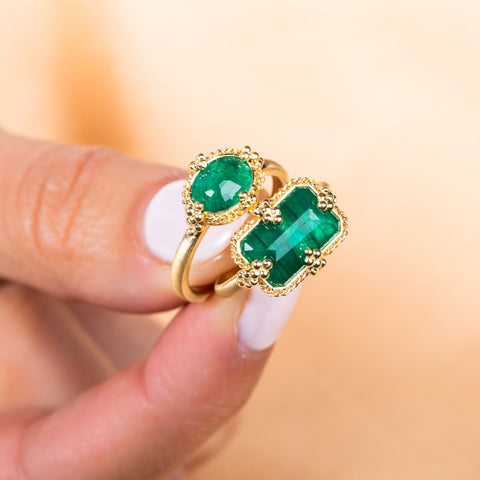
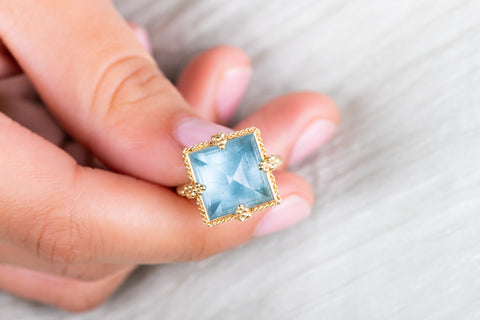
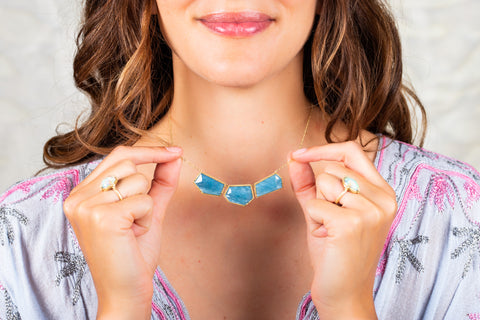
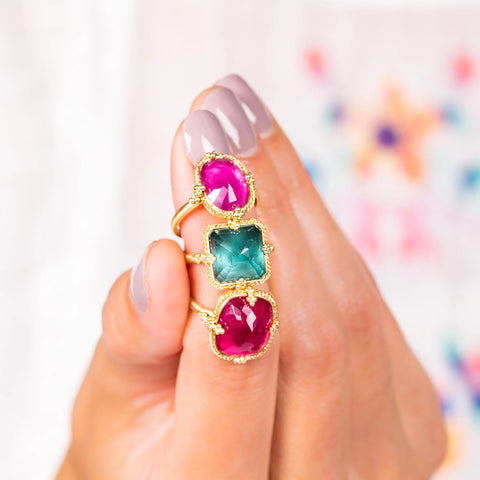
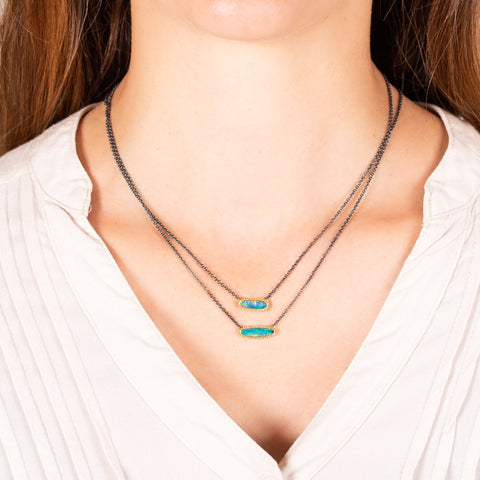
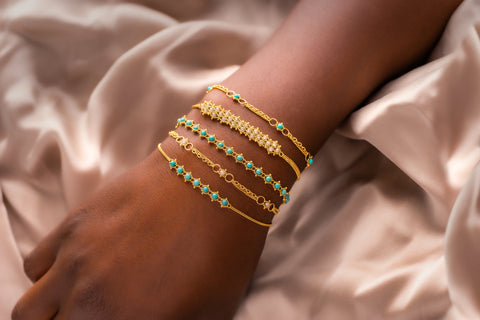

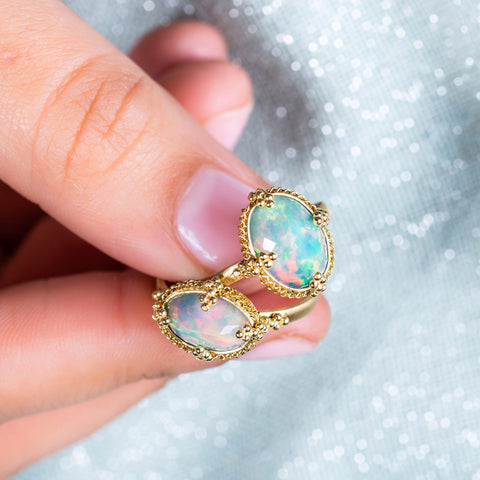

Comments (0)
There are no comments for this article. Be the first one to leave a message!